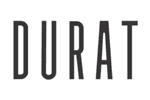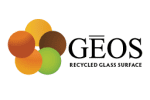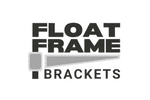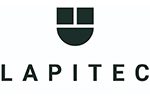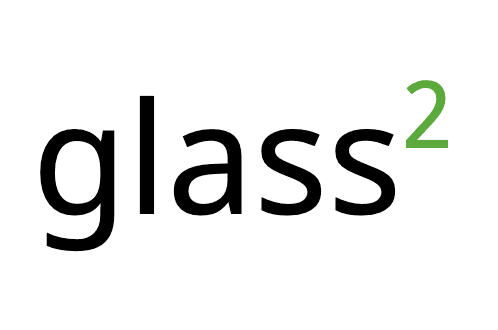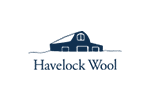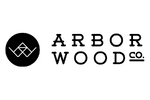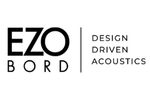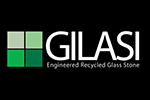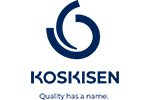Discover how you can green your life by building a knowledge base of current sustainable and eco-savvy trends. This series will delve into hot topics, current standards and practices, ways to design better spaces, and specify materials that benefit not only us, as consumers, but the world as a whole. Members of CaraGreen, a sustainable materials distributor, and other industry leaders weigh in throughout the series. This is Build Green, Live Green.
In this episode, we will be discussing the WELL Building Standard- what it is, how it differs from other building standards, and why it is important. We are here today with Jessica McNaughton and Kim Loftis of CaraGreen, our shows producer and sustainability think tank.
JESSICA: Hi, it's Jessica and Kim from CaraGreen, recording the next episode of our podcast, Build Green Live Green. And today we are talking about the WELL Building Standard which is a follow on to our earlier podcast that we did on biophilic design. WELL, unlike a lot of other building standards, stands for just well. Its W-E-L-L.
KIM: It’s not an acronym?
JESSICA: It’s not an acronym. Unlike LEED, which is an acronym, it’s just the word. And you know the question is “what does well mean?” and it really just means that: being well within that space. So, this is the first building standard that is really focused on the occupants of the space and their own well-being. So instead of just being focused on the building and some of the systems within the building, it’s really drilled down into making sure that the occupants, whether it’s a student, employee, homeowner, whoever is in that space, is a healthier, happier human being.
KIM: So, it applies to different project types? Its not just office environments?
JESSICA: No, no, yeah and we’ll get into a couple of the different project types that it applies to. But why don’t you set the stage for us and kind of let us know how did we get to the WELL Building Standard from other building standards where we’ve been recently.
KIM: Sure, yeah. So really the biggest green building standard that kind of built a reputation around the industry is LEED. It started in the early 2000s, 2004, maybe? So, LEED stands for Leadership in Energy and Environmental Design. So that standard is all about the building and how well the building performs, so it’s about your energy, like it says in the name of the building standard, it’s about how your building is going to perform on a number of different levels, considering water, considering your site, how is your building kind of giving back, or just its impact on the environment. We’re kind of shifting with this new kind of focus on WELL Building to the occupant. It’s really exciting to see the building movement move towards something that is not only beneficial to the environment but is beneficial to the occupants. And what I mean by “beneficial” is beneficial kind of psychologically, mentally, you know, indoor air quality. Those sorts of things are really becoming more of the forefront for systems like the WELL Building Standard.
JESSICA: I’m excited, too. Our podcast on biophilic design, which you can listen to on our website www.caragreen,com, really focused on some of these new techniques you can use to make sure that people are happier and healthier in their space and the WELL Building Standard, it really takes the time to, you know, figure out… Its things like supplying healthy foods, letting people know what’s in their foods, providing maybe an onsite cafeteria with healthier options or maybe having a treadmill or a gym. The nice thing about it is its not ground-up. You can take an existing building and also achieve this WELL Building Standard. I remember when we first got into our new office space, we talked about trying to find ways to incorporate some of these WELL features and concepts into that space. And you can see that the little things that we do are making people happier. And the fact that there’s this whole building standard that has formed around that biophilic design principle is really exciting.
KIM: Yeah, yeah, it’s really really neat, especially because we spend so much of our time indoors. And we talked about this in the last episode as well. We spend 90% of our time indoors. So, unfortunately, those spaces have really become kind of drab, you know there’s not really a lot of natural elements in there, especially when you think about office environments, where a lot of us spend a fair amount of our day. It’s usually a lot of white walls, maybe not a lot of natural lighting, 90-degree angles everywhere, maybe isn’t the most visually pleasing and the most intriguing space to be in. But then obviously there are other elements where you can bring in plants that filter the air, which is part of the WELL standard, or a walkway that is maybe more intriguing than a hallway that is just straight and doesn’t have any interest to it. So, there’s all sort of ways that you can implement these design principles to make your spaces more enjoyable and more healthy.
JESSICA: So, to kind of recap, WELL Building Standard is a new building standard that puts building occupants first and is trying to create a healthier environment for them, whether it’s more productive, whether it’s helping people heal faster, learn better or more efficiently, but it’s really about the people that are in that space. So, let’s get into the details of the WELL Building Standard. The WELL Building Standard is organized into 10 concepts. And a concept can be something like air, water, light, community. So, there’s 10 concepts, and within each concept, is a certain number of features. Some of those features are preconditions which must be met and some of them are optimizations, which can be achieved by certain building techniques.
KIM: So, like air has 14 features, and 4 of those are preconditions.
JESSICA: Right. And then 10 of them are optimizations, that’s correct. We can get into the 10 concepts, but first let’s talk a little bit about WELL version one and version 2. We’re going to focus on version 2 for this podcast because I think it is more encompassing, it’s been improved upon, which is what you want in any building standard. So, it has shuffled around the categories. There used to be 7 concepts, now there are 10. There used to be 100 credits, now there are 112 credits.
KIM: Okay.
JESSICA: What didn’t change, though, is how many credits you need to achieve certification. To achieve silver certification, you need 50 points, or credits, gold certification, 60 points, and then platinum certification is 80 points.
KIM: And isn’t it true that you can go for either of the certifications right now? You can do version 1 or version 2?
JESSICA: Right. Version 2 is considered to be the pilot version, but as everyone knows, and as our listeners know, any pilot version eventually gets adopted and becomes the main one.
KIM: Right.
JESSICA: So, if you are currently considering pursuing version 1, have at it, it’s totally fine, but you might want to reference version 2 just because it is a little bit more robust and will give you a few more options. And it does segment the concepts a little bit more logically, which is something that WELL Building Standard is going to learn as it gets developed and implemented.
KIM: Right, there’s a comparison tool between the two versions at wellcertified.com.
JESSICA: Right. It’s a good tool that lets you see how credits translate from one to another so there’s a tool there that you would use if you were trying to achieve one of these. Alright, so why don’t we get into the first concept of the WELL Building Standard which is air. So, I think one important thing to note about WELL is it addresses certain things that we may not even think about, about how our body reacts with the building. There are certain ways that our body engages with the building that are out of sight, out of mind, but they are actively happening.
KIM: And when you go through the features of the standard, it’s going to tell you what kind of body systems are affected in that feature, so you know what you’re affecting, how you’re able to make change in the people that occupy that space.
JESSICA: Right, so when you think about body systems, were talking about everything from the cardiovascular system, your endocrine system, immune, muscular, nervous systems, reproductive system. So, you might not think about how contaminants in water affect your reproductive system, but they do. So, it’s really nice that you can see within every one of these features it mapped to that, that this is affecting my reproductive system. And as a young woman in her 30s, you care-
KIM: Absolutely.
JESSICA: -that your reproductive system is being impacted.
KIM: Absolutely, yeah, it’s definitely a big concern for anybody and I think that when you look at these sorts of things and you see how it’s affecting you internally, its really surprising, but it’s also really good knowledge to know that as a part of the building industry, we need to be aware of these things and how we can make change.
JESSICA: Right. So, I think it’s great that you used PaperStone countertops because they use recycled content, which is what LEED is about, but it’s really great that you used PaperStone countertops because they don’t have any harmful toxins or caustic chemicals used in sealing them or something like that.
KIM: Absolutely.
JESSICA: So, that is really how WELL is so different. It’s not just saying, “hey, we thought about people and we put a treadmill in the basement,” it’s saying, “no, we looked at your body and your systems that control your body and we optimized this building so your body will have the best experience in that space.”
KIM: Absolutely. And perform at your best.
JESSICA: And we need you perform at 100% efficiency all the time.
KIM: All the time.
JESSICA: So, let’s talk about some of the different concepts. So, the first one is air. What are some examples you can think of, what sort of features that WELL would use for air?
KIM: One of the first things that I think about when I think of air is a smoke free environment. A few years ago, North Carolina went through a change in the law, where you could no longer, I guess it was more than a few years ago, you could no longer smoke inside. It just makes a huge difference in that environment. It’s just so much more enjoyable for the people that don’t smoke, which is the majority of people. So, that is just a really big change that is so important for your health and I think one that a lot of people can relate to and understand as well.
JESSICA: Yeah. And we’re not going to go through every feature, prerequisite, precondition, or optimization on this podcast. We’re just going to give you the overarching concepts and a couple of examples. So, not smoking is a great example of the air quality one. So, there’s some techniques you can use around that. Cleaning supplies is one that we are adamant about in our own office, there’s requirements around that. So, it’s just really making sure that the air in a WELL building is clean, healthy air and positively impacting your body system.
KIM: Yeah, and there’s some other things in the air concept as well that, I think, are something people would think about. So, smoking, I think, is something that’s obvious. Something that you maybe wouldn’t think about is something in your furnishings, like you mentioned with the countertop example, things that are going to off-gas. You don’t really think about that in your furnishings very much but it’s something that’s important. I mean, pretty much anything can off gas.
JESSICA: In version one, you’re right, that is in the air concept. I think in version 2, that actually got moved into the materials concept.
KIM: Okay.
JESSICA: But it gets into the air. But I think that’s why they created that new concept. As we go through these concepts and give you examples, there are a lot of features in each of these concepts.
KIM: There are a lot of features.
JESSICA: In air for example there’s 14 features. So, we aren’t going to go through everyone, but you can go to wellcertified.com and the building standard is there.
KIM: Perfect.
JESSICA: So, the water concept, that has 8 features within it. Three of them are preconditions and 5 of them are optimizations. But one of the most important preconditions with water is making sure that it doesn’t have chemicals in it.
KIM: For sure. Yeah, like cadmium, chromium, chlorine, and benzene.
JESSICA: Benzene, in your water? I can’t even. Unless you live near Duke Energy.
KIM: And most municipalities clean their water with chlorine. So, it’s going to be present, so filtering that out is important.
JESSICA: Just looking at the different systems that water impacts, the body systems that water impacts is frightening so its great that this standard is really focusing on those things. In the WELL Building Standard, in general, there are two things that it does very differently that I am excited about because I think it incorporates accountability. You have to prove all of these things. So, they have, in every feature, what you have to provide, whether it’s a photo, a letter from the architect, a letter from the owner, or a letter from the contractor, or a plan. It lists in there what documentation is required to prove all of these things, so that’s really nice. And then also monitoring and education. A lot of the features within each concept are an education plan. You need to be educating people so they know.
KIM: Right. And you appreciate the kind of space that you in or the type of water that you’re drinking, or the food you are eating.
JESSICA: Or you know where to get the filtered water and stuff like that. So, water is a big one. Water conservation, Low flow, that type of stuff. Nourishment directly impacts the individual. I mean, you know. You’ve got some pretty stringent food requirements.
KIM: Gluten free, dairy free, allergic to eggs.
JESSICA: Flavor free. Exception: bacon.
KIM: Yeah. Always, always. Yeah, so this is things like the availability of fruits and vegetables and just healthy foods, so transparency on those foods, as well, the nutrition levels that they are automatically going to provide. And then staying away from processed foods, and artificial ingredients, artificial coloring, and things like that. I think its kind of starting to become more common knowledge that those things are not overall healthy for you.
JESSICA: Well, this one I get excited about, too, because we mentioned this in our last podcast, we were telling our listeners about the Exploris school-
KIM: Yes.
JESSICA: -right here in Raleigh. That’s going to be a WELL building. And the idea of this nourishment in a school is very exciting to me. There was some advocacy for school nutrition some time ago and I go to my kids’ school and I see gray hotdogs that I do not get excited about.
KIM: I’m sure you don’t.
JESSICA: So, the idea of having requirements here, in an academic setting or an educational setting is really, really interesting.
KIM: Yeah. And whether it’s more awareness about it or whatever the situation is, there are a lot more people that have allergies, and having an awareness for that and having a requirement for having labels for things I think is really important to people that do have allergies or sensitivities. For me, since I do have certain sensitivities and allergies, I’m better at looking into things and kind of understanding what I can and can’t eat, but it’s always helpful to know just flat out if something is okay for me.
JESSICA: Yeah, yeah. Absolutely. Alright, so, next concept is light. We talked about this in the biophilic podcast as well. Our body reacts to light. A lot of people don’t know that. Awake and asleep, light and no light, but we have a circadian rhythm and having an indoor environment that stimulates or matches that is very important.
KIM: Yes.
JESSICA: Sunlight already does it, but if you’re in an interior space that doesn’t have sunlight, then-
KIM: You get out of sync. That can happen really easily. I always find it really neat that when you bring a new baby home, they tell you to let the baby nap by the window, near the sun, because it helps them figure out when day and night is, which is really important when you have a new baby. When it’s supposed to sleep.
JESSICA: They don’t need to know when day is, they just need to know when night is.
KIM: Yeah, so light is really important, not only for circadian rhythm, but it also helps you focus more. Having access to a window is going to be able to help you look outside and maybe have a distraction from what you are doing. And its not the type of distraction that totally gets you out of what you are doing, but it gives your brain a break. It also helps with being able to look at further distances. If you can look out a window and see a hundred yards away from you, it gives your eyes a break as well, so it’s really important for productivity. Again, going back to that health and just optimizing and making sure that people are performing at their best.
JESSICA: Right. So, some features here might be incorporating circadian lighting into a space, maybe the type of window glass that you select, you know, minimizing reflective surfaces and glare within a space, shading, things like that. Okay, so, we’ve covered air, water, nourishment and light. What’s the 5th concept here?
KIM: So, movement is the 5th concept. It was previously called fitness in version 1, and it promotes an active lifestyle by encouraging physical activity, so you can do things like making your circulation stair part of your space instead of sticking it on the end of the building where everybody only has to go down it unless there’s a fire.
JESSICA: What do you mean circulation stair?
KIM: So, actually, I guess I should have said your exit stair. So, a lot of times if there’s circulation between one floor or another it would just be a stair that is encapsulated at the end of a building. But if you put that stair within your space, people are likely to use the stairs than going over to the elevator.
JESSICA: Okay. Okay. And also, things like, I mentioned earlier, having onsite fitness facility or encouraging movement by placing things that people use all the time, like a printer in certain area, or locating a cafeteria somewhere where you have to walk to get to it, or water fountains, bathrooms, things like that.
KIM: And you can do things like a standing desk. I love my standing desk, I’m actually not using it right now because I’m pregnant and I like to sit more, but standing desks are really great. I loved mine because I felt myself getting up and moving around more often because it was just literally easier to walk somewhere than get up out of my chair and go somewhere, which sounds so silly but it’s really true. And I found myself stretching more, and literally moving more, so there’s things like that that you can do as well.
JESSICA: That’s great. So, the movement category has 12 features and 2 of them are preconditions and 10 of them are optimizations, and we touched a few of those things here but again, the more detailed breakdown of every one of these features and concepts is at wellcertified.com. So, the next one is thermal comfort. This is a funny one in our office because having a lot of women of different ages there certainly, some have different thermal requirements.
KIM: Very, very true.
JESSICA: So, thermal comfort. This has 7 features, 1 precondition and then 6 optimizations. The big thing I think in thermal comfort is the ability to control, you know, the temperatures that you want, and there’s a lot of different techniques for doing that.
KIM: Absolutely.
JESSICA: But being too hot or being too cold obviously affects your body systems that we talked about earlier.
KIM: So, it’ll be distracting, if you’re too cold or too hot and keep you from your work or all kinds of situations.
JESSICA: Or just make it unpleasant to be at work. We just don’t want to feel uncomfortable.
KIM: For sure.
JESSICA: The next one is near and dear to us, because of some of our products, our acoustic products. But, yeah, sound. So, why is sound important?
KIM: Sound is really important because of the thing I’ve mentioned a few times, which is productivity in your space and getting distracted from things, so sound can really help you focus on the job at hand or can really distract you from that. So, having that comfort of sound, and, you know, being too quiet, which is actually an issue. People think that you maybe want total silence, but you actually do want some sort of background noise. Silence can be just as distracting as too much noise.
JESSICA: So, the sound concept has 5 features, 1 precondition and 4 optimizations. Another example of sound control would be capping noise levels, so putting limits on indoor and outdoor noise would be one technique that you could use. Sound masking is another one. When we went to the ASID Headquarters they had that white noise. Often you will have sound masking when you have a private space for people to go away to-
KIM: To have a private phone call.
JESSICA: Exactly. Exactly. So, there’s a lot of neat ways to use sound. And the EchoPanel, the Kirei EchoPanel-
KIM: Yes, we love their products.
JESSICA: -are beautiful ways to use baffling systems and they’re recycled and they’re colorful-
KIM: Yes.
JESSICA: And they’re economical. So, using those systems to really mitigate sound has been something that we really enjoyed doing at CaraGreen.
KIM: Yeah, and I think that sound is something that has become a little bit more at the forefront for, specifically, office design because the open office plan has become so popular, and everybody loves that style, but it can pose a lot of issues when it comes to sound because there too much open area and people don’t have a place to go to be alone and have their own private space or not hear their coworker talking on the phone or crunching on their potato chips. But another cool thing is these sound solutions that you are talking about with EchoPanel have really become such an integral part of design that you see them everywhere and they are so beautiful.
JESSICA: Yes, and they can easily be done after the fact. So, yeah, you might have had this great idea for an open floor plan, but your polished concrete is going to create a lot of problems, and you don’t have carpet now, so being able to use acoustic panels on your ceilings and your walls, it basically replaces carpet in those open plans.
KIM: For sure. And a great example that everybody can relate to is the restaurant that is too loud. We’ve definitely seen a lot of restaurants add them after the fact to help out with this. When they do concrete floors and hard surfaces for their tabletops and nothing on the ceiling, it gets really, really loud in there.
JESSICA: Yeah, and I think that’s a good segue to the next concept, which is materials. Materials was carved out in version 2 because of what you mentioned earlier. We’re engaging with the materials in the space all the time, we need to know what’s in them. So, the materials concept limits the amount of harmful ingredients that can be in the materials that we use, like furnishings. You know, sitting on a chair that’s covered with scotchguard is not good.
KIM: Absolutely.
JESSICA: And you can see how those materials and those contaminants or treatments that are put on top of them interact with your body systems. And WELL does a really good job of outlining ways to find materials that are not going to be harmful to you inside the space.
KIM: Yeah, I think that’s perfect because there are so many materials in our space. I think a lot of times we think of, you know, maybe material on the wall or material on the floor but thinking about the conference room chair that you’re sitting in or the fabric on the lounge chair in the front, things like that you’re coming into contact with every day.
JESSICA: Another one I think that is really important on the materials side is not just indoor but outdoor paint. So, the paint that you use exterior is stormwater runoff, pull contaminants out of that into the soil or cladding, whatever the material may be. What runoff from the outside of your building could have a negative impact on the environment.
KIM: Wow.
JESSICA: Yeah. It’s pretty comprehensive. I think with the materials concept, there’s 14 features. 3 or them are preconditions and 11 are optimizations and, again, optimizations are just additional credits that you can do some really neat things to try to achieve even more credits or a higher certification level beyond the preconditions.
KIM: We’ve mentioned emotional health a few times so far and that leads us into the next concept which is the mind, so this is all about social well-being, and really all about the occupant here.
JESSICA: And when you say emotional health, we’re talking about things like stress, depression, some of the things we talked about in the biophilic podcast where stress is one of the hugest factors in human health today.
KIM: Absolutely.
JESSICA: Yeah. One in 5 people are depressed. It’s an alarming statistic. So, the idea of a building design contributing to your emotional well-being is really exciting. And I think that WELL does that. And it goes back to what I mentioned before about education. So, a big part of the mind concept is educating the people about what is available. Why is the building designed this way? How do these things impact your systems? Giving them access to beautiful materials so that they feel comfortable and cared for. Taking surveys that say, “hey, what do you like, what do you need, how do you feel?” Giving them feedback surveys and actually doing something about it.
KIM: I think this is one where you can see a lot of those biophilic design principles come in. We all know that spending time in nature kind of calms us down, so having access to nature or having that nature in that space is really going to reduce the amount of stress that you feel throughout your day.
JESSICA: I agree. I think that having access to nature doesn’t mean you have to put an arboretum in the middle of you building. It could be an outside walkway, it could be pictures of nature, it could be pictures of animals, or trees, or natural themes, just those things themselves have been proven to calm people down. The other thing that I really enjoy about the mind concept, or I respect about the mind concept, it actually tackles big issues like tobacco cessation, stop smoking, really works with employees, or occupants, to encourage them, offering programs to help them stop smoking. There’s even a program for an emergency response to an opioid overdose. So, things like that where they really, they offer optimizations that go beyond just “hey, here’s a meditation room you can go into,” which is a great concept as well-
KIM: Absolutely.
JESSICA: -but something about actually making sure there are failsafe’s in place to try to help people with all sorts of issues or concerns.
KIM: I think that’s why you see certifications like this have constantly putting in, well maybe not constantly, but always looking forward and creating new versions to kind of keep up with how our society is changing and what the needs are for these specific concepts and how they change over time.
JESSICA: Absolutely. And last but not least is community. This is really about equity and social cohesion so again things like the surveys I mentioned earlier where you’re getting everyone to give feedback or a focus group where you’re bringing a group of people together, getting to know each other, developing that sense of community, but it’s also things like support for new mothers, right?
KIM: Right.
JESSICA: What are those pods that they have at the airport?
KIM: Um, they are for nursing. I’m not sure what they are called.
JESSICA: Yeah, I think its Momovar or something like that. But having stations like that or bathroom accommodations. For me, the family bathroom is so nice, it’s a saving grace at the airport, I’ll tell you that.
KIM: Absolutely.
JESSICA: I don’t need to be chasing three kids into two different bathrooms and, you know-
KIM: Being worried that one is going to crawl under.
JESSICA: Yes, yes. But the community feature has 3 preconditions, 16 features and 3 are preconditions and the other 13 are optimizations. This is new to version two and its really about social equity, and we’ve seen a lot of things, specifically here in North Carolina, where certain people are not treated the same and the WELL Building Standard has taken lessons from that and drawn it into their standard, and I think that’s great. So that’s the 10 concepts. There is another concept but it’s really this innovation category and that is when you come up with something creative that is not covered within the standard. So, they opted for you to get an additional 10 points by coming up with your own creative strategies. These standards, they can’t think of everything that you can do, and you might have something specific to your area or unique to your business. Maybe you don’t have a cafeteria, right, but, you can’t offer organic foods, so that credit may not apply to you.
KIM: Sure.
JESSICA: But maybe you develop a relationship with a local food service or there is a food truck that comes in, or like something like that where you come up with a new strategy.
KIM: Yeah.
JESSICA: So that’s the innovation concept.
KIM: And the people that are working with these certifications are creatives. They are really going to enjoy being able to come up with their own ideas and implement them and get credit for them.
JESSICA: Absolutely. So, a quick recap. The WELL Building Standard puts people first. It has 10 different concepts with features inside of those concepts. There are preconditions, all of which must be met to hit the base level of certifications, which is silver, and then there are optimizations which can also be achieved to get higher levels of certification. And lastly, the main thing is this is based on how these 10 concepts interact with your body.
KIM: Yeah, we talked about the systems that you can see when you look through the different concepts and look through the features, they’ll tell you what systems in the body they affect. So, something that we might not think about from our perspective of building products distributor, or an architect or a designer’s perspective, to think about those body systems, they are really important because we have to think about the occupants that our materials are affecting and the people we are designing for.
JESSICA: Right. And our listeners should get excited too because they are going to see the WELL Building Standard crop up around them and the idea of going in to one of these WELL Building spaces. You and I went into ASID headquarters in Washington, DC. It’s really enjoyable because you notice these things and everything you notice is something that the owner of that building did for you, to make your experience in that building better. The idea of high-rise apartment building’s doing this, large offices, companies like Google.
KIM: Right.
JESSICA: It’s just going to make for great places to work and great places to be. And it’s nice that this is the first time that we’ve come first.
KIM: Absolutely.
JESSICA: And it’s something that’s really important to CaraGreen, as a company, because we’ve tried to stay at the forefront of building trends and always educating our customers and our listeners on those building trends. So, the materials that we have have kind of followed the path of the trends to sustainable and green building.
KIM: Very true.
JESSICA: And this is, as WELL Building has emerged, has given a new place for all of our great products to really contribute back at a personal level.
KIM: Absolutely.
JESSICA: So, we’ve always had a personal connection to them but now our listeners and people using WELL Building can also have a good connection to those products too. We will put a copy of this podcast on our website at www.caragreen.com. Check out our great products which can be used for WELL Building projects. Yeah, I mean, I guess the last thing I’d add about WELL is once you get certified, you’re not done.
KIM: That’s true, yeah. You have to get recertified every 3 years.
JESSICA: Yeah. And I think there’s a scorecard associated with it as well, so it is not an undocumented standard. It’s a recertified standard. And there’s a lot of documentation required. So, WELL is here to stay. Were excited about it and I think we should make another podcast later on as this matures and develops.
KIM: I think so too, yeah.
JESSICA: I think there are 191 million square feet of WELL projects underway right now.
KIM: Oh, that’s so exciting.
JESSICA: 37 countries.
KIM: Wow, I love seeing things like this catch on.
JESSICA: Yeah, me too. Alright, well thank you for listening to Build Green Live Green. This is Jessica.
KIM: And this is Kim.
JESSICA: And we will see you next time.
We have multiple LEED APs and a WELL AP on staff, available to answer any of your questions regarding materials and building standards.
For a written manuscript of this episode as well as supporting resources, visit our website at www.caragreen.com/blog. Want to know more about a specific industry-related topic? Shoot us an email at social@caragreen.com.

